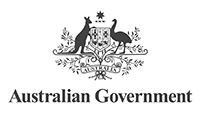
Highland Wetlands Conservation
Preservation and protection of Little Llangothlin Nature Reserve is a focus in the Northern Tablelands. The site is listed as a Wetland of International Importance under the Ramsar Convention because it supports threatened species and ecological communities. It also contains 2 examples of Upland Wetlands, locally known as lagoons, many of which have been heavily modified by human activity, and Little Llangothlin Lagoon is rare due to its near-natural condition.
These wetlands also provide refuge for waterbirds during droughts, including the Pacific black duck, grey teal, Australasian shoveler, Eurasian coot and white-faced heron, and supports 8 migratory waterbirds listed under international agreements.
We are working closely with First Nations communities, public and private land managers and species experts to strengthen wetland resilience and habitat.
The project aims to:
- increase distribution of the threatened ecological community of New England peppermint (Eucalyptus nova-anglica) grassy woodlands
- enhance wild populations of Bell’s turtle (Wollumbinia belli) through hatchling incubation and release in collaboration with the University of New England
- further protect Upland Wetlands of the New England Tablelands (New England Tableland Bioregion) through improved land management practices
- enhance habitat for the Australasian bittern (Botaurua poiciloptilus).
Traditional Owners’ ecological knowledge is being incorporated into management of associated local threatened species and ecological communities at the sites.
This project is funded by the Australian Government Natural Heritage Trust.
More details about the project will be coming soon. In the meantime, you can read about work carried out so far to preserve this Ramsar site. To find out the latest news and advice for your region, subscribe to one of our newsletters.
